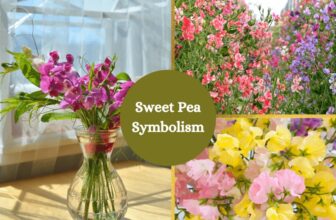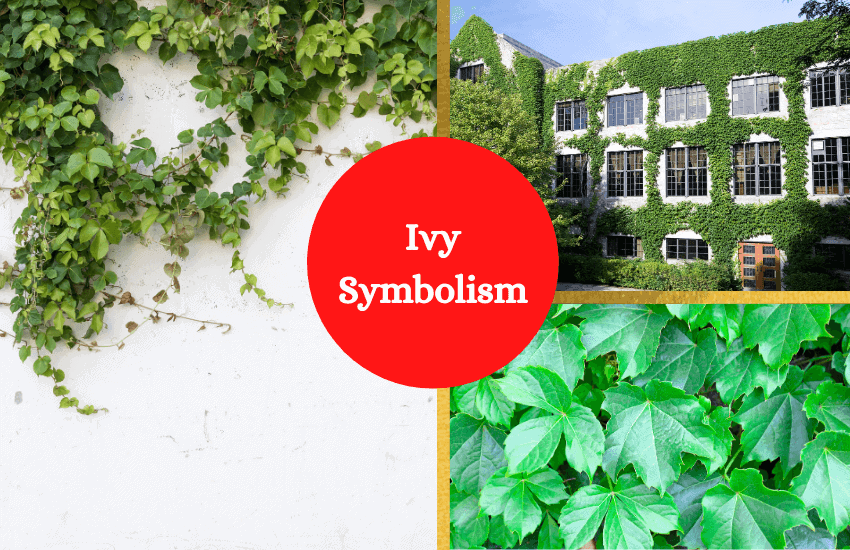
Table of Contents
Commonly known as English ivy, this plant is a woody evergreen vine frequently used to cover stone and brick walls. Here’s a closer look at why it’s regarded a vigorous and aggressive vine, along with its symbolism and practical uses today.
About the Ivy Plant
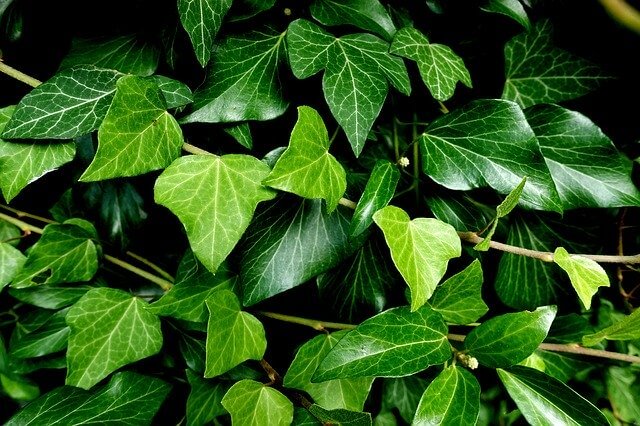
Native to Northern Europe and Western Asia, ivy refers to any plant of the genus Hedera of Araliaceae family. There are several varieties of the plant, but the most common is the Hedera Helix, also known as European ivy or English ivy. It was brought by European colonists to the regions of North and South America.
The evergreen climber usually has medium-sized, dark green leaves with yellow or white margins. Its leaf patterns and shapes vary, as some are heart-shaped while others are five-lobed. While most varieties have broad leaves, the Needlepoint variety has pointed lobes, and the Ivalace features cupped and waved edges. Ivy typically grows around 6 to 8 inches tall, but can climb to heights of 80 feet.
- Interesting Fact: The English ivy or Hedera helix should not be confused with the other plants called ivy, such as poison ivy, Boston ivy, violet ivy, Solomon’s Island ivy, devil’s ivy, Engelmann’s ivy, and ivy geranium that don’t belong to the genus Hedera. Also, the ground ivy with the name Glechoma hederacea is unrelated, although the species have similar common names.
Why Is Ivy a Vigorous and Aggressive Plant?
Ivy is a foliage plant that spreads quickly, but it can choke other plants and trees, as well as cause damage to brick walls and structures with fissures. Also, it has a tendency to spread out of control and affect the growth of native plants, making it invasive in some regions, including the Pacific Midwest and Northwest. More than that, all parts of the plant are toxic to humans and pets.
Meaning and Symbolism of Ivy
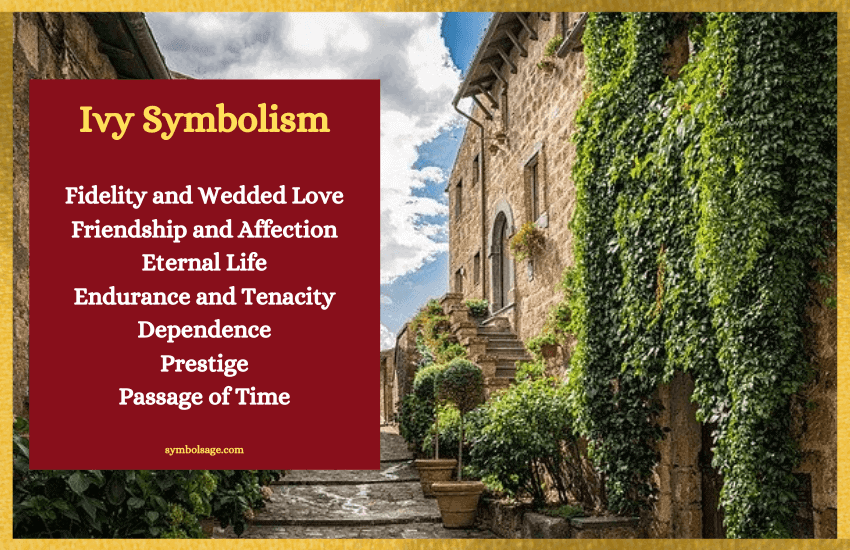
The ivy plant has gained symbolic meanings in different cultures and religions, and some of which have been inspired by the nature of the vine. Here are some of these meanings:
- A Symbol of Fidelity and Wedded Love – Did you know Lovestone is one of the common names of ivy in Britain due to its tendency to grow over bricks and stones? Ivy clings to any surface, making it a perfect representation of wedded love and fidelity.
- A Symbol of Affection –The tendrils, or the thread-like part of ivy, often in a spiral form, represent affection and desire.
- A Symbol of Friendship – Ivy is seen as a symbol of friendship because of the tenacity of its attachment. Nothing can separate ivy from its host once it has once embraced it, similar to real friendships.
- A Symbol of Eternal Life – Since the plant clings even to dead trees and remains green, it’s regarded as a symbol of eternal life and the eternal nature of the soul after death, by pagans and Christians alike.
- Endurance and Dependence – It’s also said to represent endurance and dependence due to its clinging nature.
- Prestige and Passage of Time – Ivy represents prestige in the context of universities in the US. This is because these the ivy growing on the buildings represents the age of the buildings, signifying that the university is long-established. The eight Ivy League universities are highly prestigious and include the likes of Princeton, Yale, Harvard, Brown and Cornell.
Uses of the Ivy Plant throughout History
- In Ancient Greece
In Ancient Greece, the Greeks would wear wreaths of ivy on triumphant occasions. While laurel and olive wreaths were more common, Ivy was also sometimes given to victorious athletes in ancient Olympic Games. Also, ivy was dedicated to Dionysus, the Greek god of wine, worshiped by Mycenaean Greeks in 1600-1100 B.C.E.
- In Ancient Rome
The plant was regarded sacred to Bacchus, the Roman equivalent of Dionysus. It was thought to prevent someone from getting drunk. Ivy was also used as a decorative element in the Roman gardens of Pompeii and Herculaneum.
- In Victorian Era
Fidelity was highly valued by Victorians. No wonder the ivy motif was popular in gifts at the time, such as friendship brooches. Also, ivy has a symbolic role in the painting The Long Engagement by Arthur Hughes, where it depicted the plant having grown over the lady’s name, Amy, which was carved into the tree long ago. This goes back to ivy’s association with age, symbolizing the passing of time.
- In Magic and Superstitions
Some cultures believe in the magical powers of healing and protection of ivy. In fact, the Hedera helix is thought to guard the area against negative energies and disasters, and some used to carry the plant in hopes of attracting luck. Also, ivy is incorporated into holly during the Christmas season due to the belief that it’ll bring peace to married couples.
The Ivy Plant in Use Today
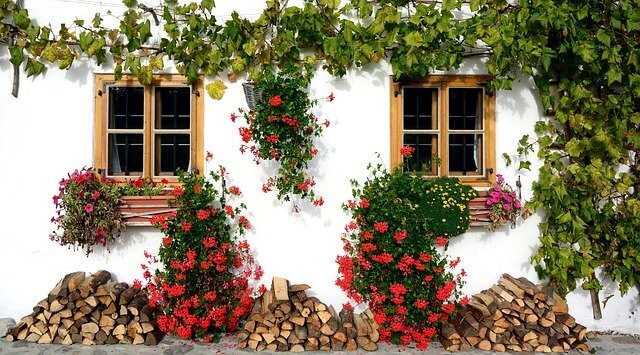
While the ivy plant remains abundant in the forests, cliffs, and slopes, it’s also a popular plant in garden spaces, used as a ground cover on stone and brick walls. It’s commonly found on indoor topiaries, outdoor hanging baskets and containers. Sometimes, ivy is also used on church decorations, as well as on cut flower arrangement in weddings.
Since English ivy is strongly associated with The Holly and the Ivy, it remains a festive decoration during Christmas and winter seasons. Ivy is also regarded as an air-purifying plant? According to NASA, it can remove toxins like xylene, formaldehyde and benzene.
English ivy is also believed to have anti-inflammatory, antiviral and antioxidant medicinal properties. Its extracts are used to treat inflammation, arthritis, bronchitis, and liver disorders, though there isn’t enough clinical proof of its effectiveness. Unfortunately, it’s mildly toxic when taken orally, and can cause allergic skin reactions.
Disclaimer
In Brief
The ivy plant has been popular since ancient times, and remains a symbol of fidelity, wedded love, friendship, and affection. Today, it continues to be a popular ornamental houseplant, and a festive decoration during holidays and weddings.





